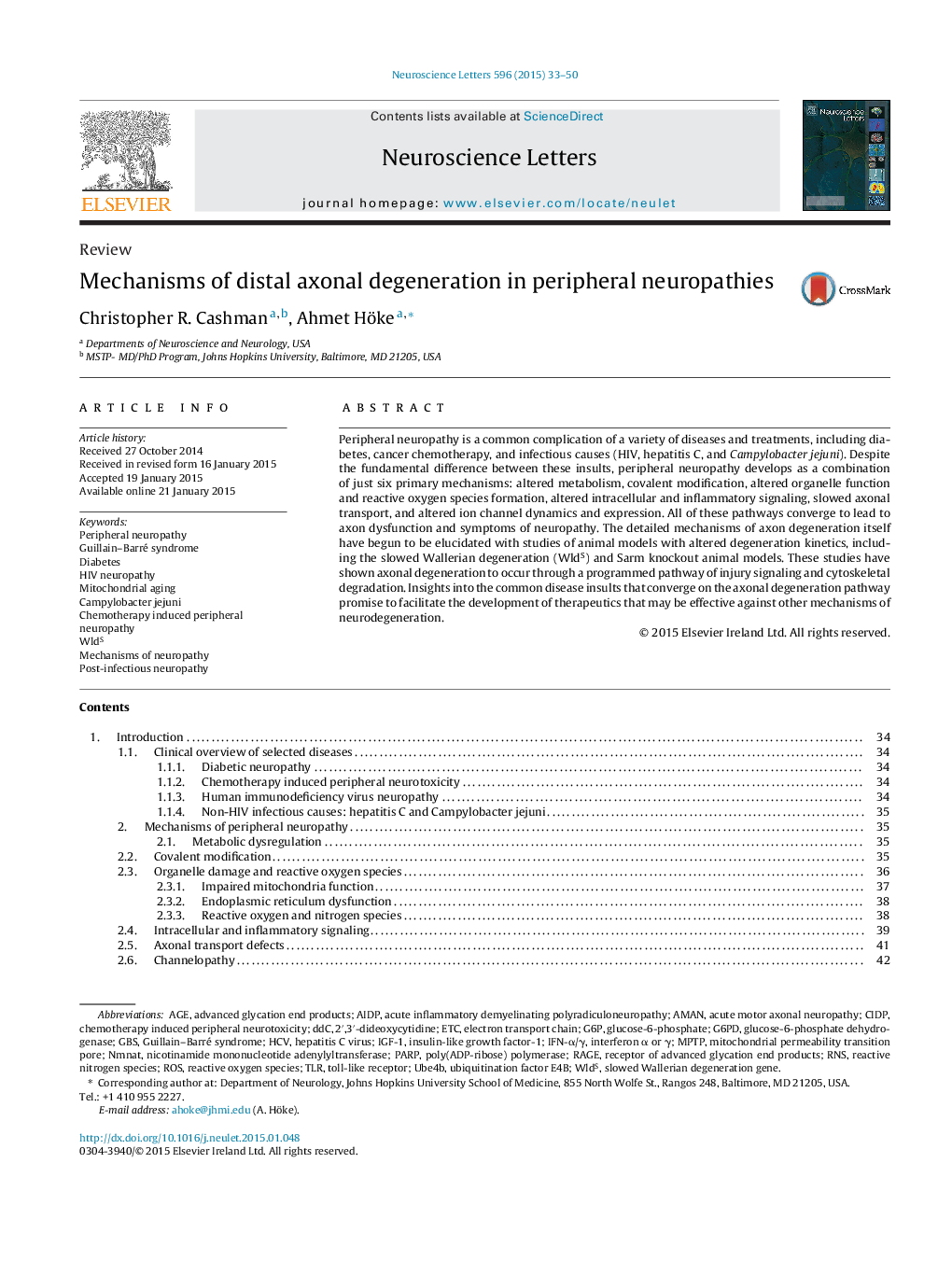| Article ID | Journal | Published Year | Pages | File Type |
|---|---|---|---|---|
| 4343502 | Neuroscience Letters | 2015 | 18 Pages |
Peripheral neuropathy is a common complication of a variety of diseases and treatments, including diabetes, cancer chemotherapy, and infectious causes (HIV, hepatitis C, and Campylobacter jejuni). Despite the fundamental difference between these insults, peripheral neuropathy develops as a combination of just six primary mechanisms: altered metabolism, covalent modification, altered organelle function and reactive oxygen species formation, altered intracellular and inflammatory signaling, slowed axonal transport, and altered ion channel dynamics and expression. All of these pathways converge to lead to axon dysfunction and symptoms of neuropathy. The detailed mechanisms of axon degeneration itself have begun to be elucidated with studies of animal models with altered degeneration kinetics, including the slowed Wallerian degeneration (WldS) and Sarm knockout animal models. These studies have shown axonal degeneration to occur through a programmed pathway of injury signaling and cytoskeletal degradation. Insights into the common disease insults that converge on the axonal degeneration pathway promise to facilitate the development of therapeutics that may be effective against other mechanisms of neurodegeneration.
